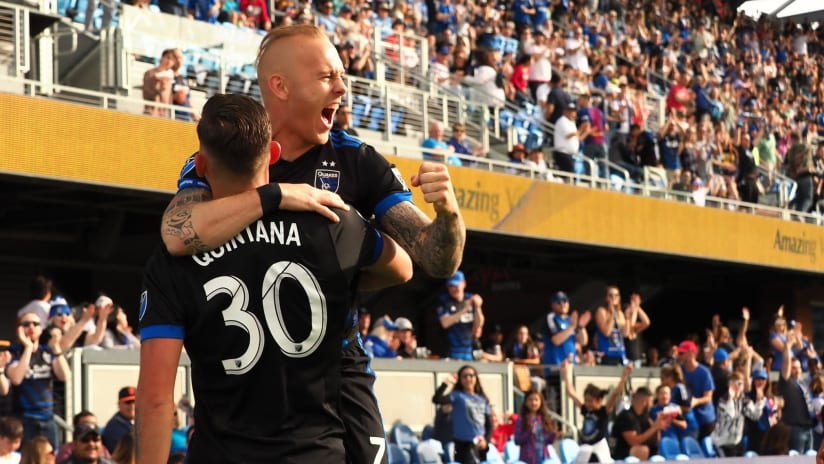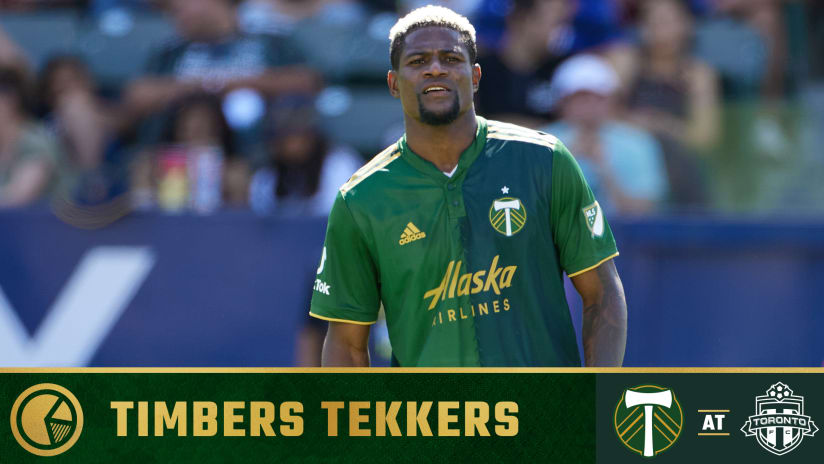The San Jose Earthquakes’ origins date far beyond Major League Soccer, but as it concerns MLS, the franchise’s roots can be traced back to the league’s day one, bookending an era that’s delivered two classic teams: The Dwayne De Rosario-, Landon Donovan-led squads that claimed two titles in the early 2000s; and the Goonies team that surged to a Supporters’ Shield in 2012. Both teams were coached by Frank Yallop, and with a few exceptions, both teams had a distinctly North American feel.
MLS in 2018, however, takes place on a drastically different landscape than it did in 1996. Even that 2012 San Jose team feels like a distant, quaint memory, evoking a time when a series of erstwhile retreads could catch stoppage-time lightning in a bottle. Amid today’s expansion of Designated Player spots, additional General Allocation Money, creation of Targeted Allocation Money, as well as the increased presence the league has the world over, it’s hard to imagine a present-day phenomenon like the one Chris Wondolowski, Steven Lenhart and Alan Gordon led six years ago.
The Earthquakes seem to recognize this, as evidenced by the change of course the club undertook starting in January 2017. That’s when former AS Roma executive Jesse Fioranelli was brought in as the team’s general manager, filling a seat occupied for eight years by former Earthquakes defender John Doyle. Six months later, another Quakes mainstay was gone, with Dominic Kinnear let go from his head coaches’ role. This winter, Swedish manager Mikeal Stahre was handed the vacant job, making him San Jose’s second high-profile European hire in as many offseasons.
A similar transition appears to be taking hold on the field. Since Fioranelli took, seven players have been brought in from Europe, with attacker Magnus Erikson, striker Danny Hoesen, midfielder Florian Jungwirth, and wideman Valeri “Vako” Qazaishvili all playing prominent roles in this year’s squad. In a league that has become increasingly intent on leveraging its buying power in Central and South America, San Jose’s zag strikes a contrarian note. While MLS zigs to the south, the Earthquakes’ brain trust has fixed its gaze on the Old World.
From a team that comes from a region that gave us “Moneyball,” this feels like a particularly Billy Beane-ian approach. We can’t compete trying to win like everybody else, Beane’s dramatized character, played by Brad Pitt, said in the 2011 film adaptation of Michael Lewis’ book.
“The problem we're trying to solve,” Pitt’s character tells his scouts, “is that there are rich teams and there are poor teams. Then there's fifty feet of crap, and then there's us,” a sentiment which, in 2018, could just as easily apply to Atlanta United and Toronto FC as it would the New York Yankees or Los Angeles Dodgers. Just as Beane’s Oakland A’s had to try another approach, Fioranelli’s Quakes must chart a different course.
The disparities are different in MLS than Major League Baseball. To the extent San Jose’s living through Beane’s problem, the gaps are less severe in MLS’ world. Still, the underlying logic holds true. What are the odds that San Jose, which may never have the revenue streams as MLS’ biggest clubs, can expect to beat Atlanta, Toronto, or LAFC using the same approach? Teams like Portland or Seattle have other strengths that can help make up that gap. San Jose? There’s certainly a case for coming up with a new wheel.
Perhaps new wheel isn’t the right term. After all, turning to Europe for soccer talent isn’t, on the surface, such an original idea. But within that idea is a somewhat unique premise. In a landscape as combed for soccer talent as any in the world – one where team’s buying power gives them huge resources throw at the problem – there are inefficiencies, San Jose’s approach implies. Over a huge canvas, cracks form, and if the Earthquakes drive in those cracks often enough, they should come up with enough Vakos, Hoesens, and Jungwirths to help them contend in the New World.
Fioranelli’s approach is really a bet on himself – on his knowledge of his target market. To this point, the project’s returned mixed results, although it’s probably too early to judge. Most of the players imported from Europe have yet to play a full MLS season, while Stahre is still in the steep part of his learning curve. After a four-year absence, the team returned to the postseason last fall, but their minus-21 goal difference hinted that spot was blessed by a weak Western Conference.
This year has been much better, even if the standings don’t say so. The team only has five points in seven games, good for 11th in the 12-team Western Conference, but each of San Jose’s four losses has come by precisely one goal. Their minus-three goal difference is tied for seventh in the conference, while only three teams in the West are scoring goals at higher rate than Stahre’s squad.
The Earthquakes are better than their 1-4-2 record hints, something Giovanni Savarese has stressed throughout Portland’s two-week run-up to Saturday’s kickoff. If their plan produces prolonged success, though, remains to be seen. With two European minds in charge, the Quakes are bound to continue this approach. Whether it works to not, it’s the type of contrarian thinking San Jose needs to find a long-term solution.













